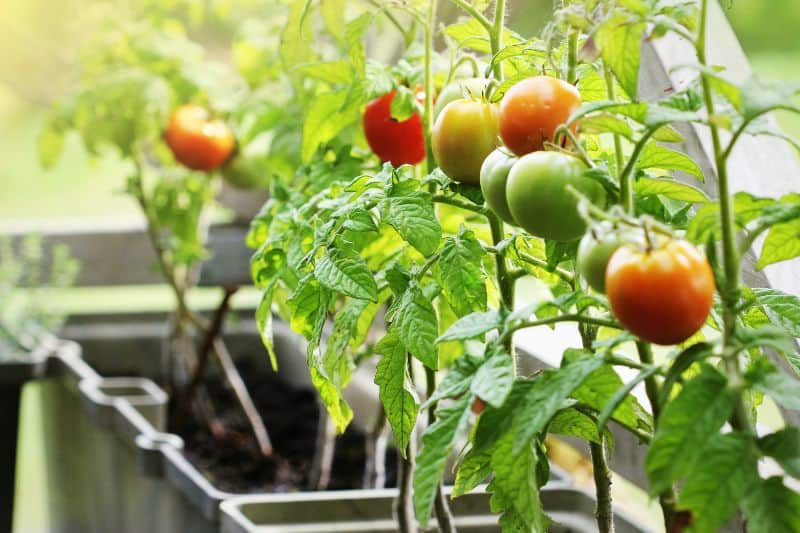If you are familiar with moon phase gardening, you already know the wide range of growing techniques available for experimentation. Farmers may now have a new method to try out: electroculture gardening.
Prepare to up your gardening game and discover your green thumbs’ hidden potential. We explore the fascinating field of electroculture gardening in this post on the blog. It all comes down to enhancing plant growth with atmospheric electricity. All the information you require about this captivating new gardening method is here.
Read: How To Dispose of Fireplace Ashes Sustainably?
What is Electroculture Gardening?
Using the natural air energy of the Earth to boost crop harvests, encourage plant development, and ward off pests is known as electroculture gardening. Electroculture gardening utilizes copper coils and antennae to capture the energy in the Earth’s atmosphere naturally. This agricultural method uses electrical currents to spur plant growth.
This can be done by directly electrifying the plant, soil, or water or encircling the crop with a magnetic field. Contrary to popular belief, electro-culture gardening is relatively simple. In reality, low-voltage electrical currents naturally flow through the soil; however, electro-culture gardening uses a metal stake or cable to channel the electrical charges into your contemporary vegetable garden or flower beds.
Although electro-culture is not new, it has recently attracted more attention due to the growing acceptance of sustainable agricultural methods. The technique’s fundamental concept is that plants react favorably to specific electrical current frequencies and strengths.
Additionally, by enhancing soil structure and encouraging nutrient cycling, electromagnetic fields produced by electro-culture can positively impact the activity of microbes in the soil.
Electroculture is becoming increasingly popular as an environmentally friendly gardening method because of its ability to improve plant growth and health without using pesticides, fertilizers, or herbicides.
It’s also a cost-effective and simple-to-implement alternative that appeals to many gardeners. Moreover, electroculture gardening might offer a way to sustainably produce food when climate change and declining soil quality issues become more pressing.
How Does Electroculture Gardening Work?
The fundamental idea behind promoting vegetation growth is to expose plants to a low field of electricity or current.
These are the three primary categories of methods for doing that:
- Direct current (DC) stimulation: To achieve this, apply a tiny amount of DC energy directly to the soil or crop. Electrodes or cables are buried in the soil or wrapped around the plant to supply the current, frequently generated by a low-voltage power source or electrical battery.
- Alternating current (AC) stimulation calls for subjecting the plant or soil to a mild AC electrical field. W wires or electrodes are looped around the plant or buried in the soil to apply the field. This is often done with an AC power source or specialized electroculture device.
- Induction stimulation: A low-level AC electrical field is created in the soil or plant tissue using specialized electroculture equipment to accomplish this. The device creates an electromagnetic field that supports plant growth and development without wires or electrodes.
The aim of electroculture gardening, regardless of technique, is to establish an electrical environment conducive to plant development and growth. This can be accomplished by precisely regulating the electrical stimulation’s voltage, current, and frequency in addition to the exposure’s duration and timing.
Despite being a relatively new technique, electroculture gardening is practical through extensive research. For example, research has shown that electroculture can improve the growth and yield of many plants, such as lettuce, strawberries, tomatoes, peppers, and more.

Is Electroculture Gardening Real?
It’s important to remember that, despite a few studies and anecdotal reports examining the possible advantages of electroculture, the world of science only sometimes accepts or endorses it as a tried-and-true farming method.
The goal of electroculture, also known as electric gardening or electro-horticulture, is to use electrical energy to plants to stimulate growth, increase production, and improve overall plant health.
According to the electroculture theory, electrical currents could be applied to plants to promote several physiological functions, including growth, photosynthesis, and nutrient uptake. However, there is a need for more reliable, repeatable outcomes from controlled studies, and the scientific evidence for the efficacy of electroculture needs to be stronger.
It’s essential to examine assertions about electroculture critically because many of these concepts do not have solid scientific support. Most agricultural and horticultural practices are founded on accepted scientific ideas, and new methods are thoroughly investigated and tested before being incorporated into the general public.
It is best to proceed cautiously and do your homework to experiment with electroculture or other comparable techniques in your garden. Remember that various elements, including soil quality, nutrients, water, and sunlight, affect the health and growth of plants.
Always be mindful of the possible dangers of using electrical currents on plants, and think twice before attempting any unusual techniques without consulting horticultural or agricultural specialists.
Benefits of Electroculture Gardening
The idea that plants may absorb energy from their surroundings forms the basis of electroculture gardening. Numerous plant species’ development and photosynthesis depend on this method of energy absorption. There are some documented advantages of electroculture, even if more study is required to comprehend its mechanics and possible uses completely.
Increased Plant Growth
Research has indicated that electrical stimulation of plants can lead to higher yields and growth rates. Even though not enough research has been done to draw firm conclusions, there is hope for better plant growth.
Improved Soil Health
Better soil health and plant nutrient availability may result from increased microbial activity from the electrical currents utilized in electroculture. Additionally, there might be less need for chemical-based fertilizers.
Simple Implementation
Obtaining the ingredients needed for electroculture is relatively easy and is reasonably priced. Numerous gardeners might also apply for it because it is simple and easy to follow.
Cost-effective
Since electroculture electrodes are cheap, gardening is a cost-effective endeavor. Electroculture has the potential to be a financially sustainable gardening method when paired with higher yields.
Sustainable
Electroculture is regarded as a sustainable gardening technique since it doesn’t require chemical pesticides, fertilizers, or herbicides. Solar energy generation has a far lower carbon footprint than other energy-generating methods.
Decreased Dependency on Chemical Fertilizers
Supporters of electroculture speculate that it would be feasible to lessen dependence on chemical fertilizers by improving nutrient availability and absorption. This may help the environment and encourage more environmentally friendly farming methods.
Resistance to Pests and Illnesses
According to some electroculture lovers, plants exposed to electric currents grow more resilient to pests and illnesses. Due to this alleged benefit, there might be less need for pesticides and additional chemical interventions.
Energy Efficiency
Proponents of electroculture systems contend that the energy input needed is minimal because these systems frequently employ low-voltage electrical currents. Electroculture may be a more energy-efficient substitute for some conventional agricultural methods.
Stress Resistance
Plants are thought to better withstand environmental stresses like drought, extremely high temperatures, and other unfavorable circumstances by using the electrostatic fields produced by electrical currents. Crop resilience may rise as a result of this.

Challenges and Considerations
Although electroculture gardening has potential advantages, there are several challenges and considerations to be aware of:
Regulatory Approval
Using non-traditional farming methods may need regulatory approval in some areas. Practitioners of electroculture must be aware of and abide by any laws about applying electrical currents in farming.
Lack of Scientific Consensus
There needs to be more agreement among scientists regarding the efficacy of electroculture. A more thorough scientific investigation is required to confirm or disprove the numerous anecdotal claims made by fans.
Energy Consumption
Although supporters of electroculture systems assert that they are energy-efficient, it is essential to consider both the total energy consumed and the energy source. The advantages to the environment could be outweighed if the electricity is produced using non-renewable resources.
Potential Environmental Impact
Little is known about how electroculture may affect the environment in the long run. Unintentional effects of electrical current introduction into the soil could include changes to water quality, soil microorganisms, and other ecosystem elements.
Cost of Implementation
Investing initially in infrastructure and equipment may be necessary to adopt electroculture techniques. Growers and farmers alike must balance the possible returns on investment with the expenses associated with setting up and running electroculture equipment.
Safety Concerns
Using electrical currents poses safety risks to people and plants alike. High-voltage or poorly built electroculture systems have the potential to damage plants or endanger gardeners if they are not carefully managed.
Variable Outcomes
Depending on the soil, climate, and type of plant, the efficacy of electroculture can differ. What does well in one setting could have different effects in another.
Read: Are Zoos Good or Bad for the Environment?
Danger of Overstimulation
Excessive electrical current application could have unfavorable effects and endanger plants rather than encourage their growth. To prevent overstimulation, careful monitoring and calibration are necessary.
Integration with Conventional Farming Practices
Including electroculture in current farming systems could be difficult, especially if it calls for significant adjustments to long-standing procedures. Farmers must think about how electroculture fits into their broader crop management strategy.
Conclusion
An innovative method for producing higher-quality fruits and vegetables is electroculture gardening. Using electricity, gardeners may boost plant growth, raise production, and enhance general plant health.
Therefore, you could start thinking about an electroculture gardening starter kit as a unique and exciting gardening present for men or women you know who also enjoy gardening.






